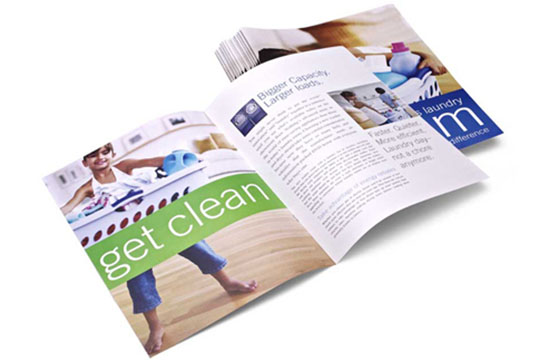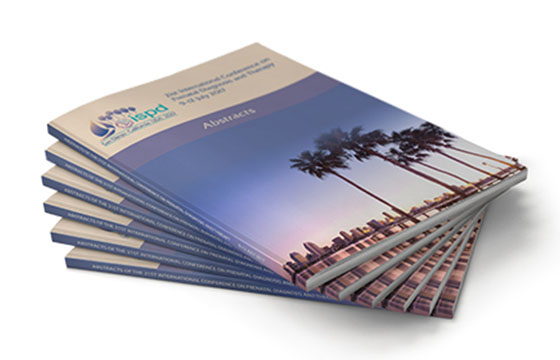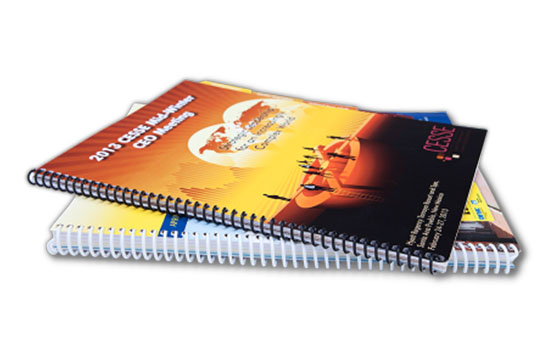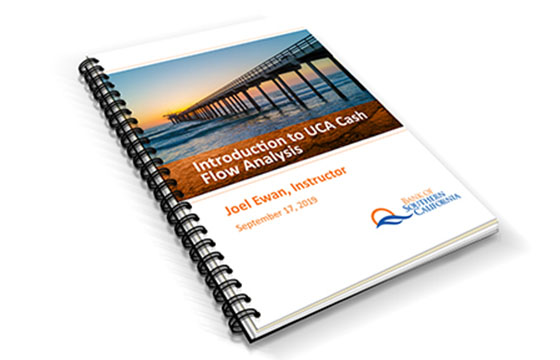How To Choose The Right Binding For Your Publication
Binding is a very important phase in the production of a publication.
It not only serves to unite the pages you have printed, but to give shape to the product, ensure its durability, and facilitate the experience for the reader.
Different types of binding influence all these factors:
Some binding techniques make the printed product last longer, other methods are cheaper and faster, others allow very specific uses of the printed product...
Just think about the calendars or the agendas! Therefore, finding out how to bind your publication and choose the most appropriate binding method is very important.
That’s why we explain the different types among the most common binding methods currently used:
• Saddle‐stitched
• Perfect bound
• Spiral bound
• Wire‐O binding
Below we will suggest some good ideas of how to use them to bind your publications.
Saddle‐Stitched Binding: A Simple And Fast Type Of Binding
Saddle‐stitched (also known as “Stapled binding”) is one of the simplest, quickest and most economical types of binding. It is done by superimposing the two‐sided printed sheets on the cover and applying two staples at the fold. Very simple!
These characteristics make the saddle‐stitched binding a type of binding very suitable for publications of few pages. In fact, in relation to other methods, with the saddle‐stitched binding you can bind from only 8 pages to about 64 pages.
The sheets of the publication are folded in multiples of four: 4, 8, 16, 32 ... Often, lightweight papers are used, but quite heavy sheets of up to 100 lb text can also be used.
It is the ideal binding technique if you have to make economic publications and in a very limited time.
Example of how this can be used:
A magazine or the catalog of a company that is not too thick: little text and many images or even a classic instruction booklet, an information leaflet or a program for a multi‐day event in 5.5” x 8.5” or 6” x 9” format, convenient to store in your pocket or purse.


Perfect Bound Binding: One Of The Most Used Binding Methods For Books
Perfect Bound binding (also known as “soft cover book”) is a type of binding that is suitable for publications with a wider content compared to products with stapled binding.
This makes it the most used binding technique for books, if we want to keep within the scope of the most economical and quickest binding. Perfect binding is formed when book pages are glued together at the spine.
The cover is usually made from a thicker cardstock that wraps around the inside pages to protect the book. The name “perfect” binding comes from the cut of the pages.
You can choose this type of binding if the spine thickness of your publication is at least .1875”. For this reason, it is a binding technique suitable for publications of at least 40 pages and no more than 300 pages.
The book is, without doubt, the most usual publication for this method of binding.
You can also take it into account if you have in mind to print textbooks, brochures with a lot of content or thick magazines. If you are wondering how to bind your thesis or the catalog of an art exhibition, it is very possible that you have found the type of binding you need. Binding with this technique is a particularly economical and fast choice to get a professional looking product.
PrintStarBooklets.com offers online printing and perfect binding. However, if you are looking for a durable product, we suggest you take a look at one of the next types of binding described below.
Spiral Bound
The spiral binding method joins the pages and cover of a book using a coil that is made of very durable plastic.
Shaped like a long spring, the coil is inserted and twisted through small holes punched along the binding edge of the book’s cover and pages.
The number of holes punched per inch is known as the pitch and usually varies between 3 and 5, with 4 holes per inch (4:1) being the most widely used pitch.
After a coil of appropriate pitch is fed through all the holes in the cover and pages, the coil is crimped at both ends to keep it in place. Spiral coils come in a variety of diameters to accommodate books of varying thicknesses. The more pages the book has, the larger the coil diameter must be for proper function and aesthetics.
In most cases, the cover of a spiral bound book is created from a different paper stock than the interior pages. Depending on the project, the cover is often heavier, glossier, and/or a different texture than the interior pages.
Some spiral bound book projects call for a sheet of clear acetate to be bound into the front of the book and a black vinyl backer to be bound into the back of the book.
These protective covers are a relatively common request for certain book projects, particularly manuals, as it adds durability and a finished look to the document. The Spiral Coil Binding method uses a spring‐like coil to join the book’s cover and pages as a unit, but allows them to turn freely.
Books bound with this method can lie flat for hands‐free reading, making it a good choice for instruction and repair manuals, cookbooks, handbooks, guides, and other reference materials.


Wire‐O: The Perfect Type Of Binding For Calendars And Agendas
Wire‐O binding stands out as a highly functional and aesthetically pleasing method of binding. This technique involves stacking the printed sheets, perforating them along one margin, and then securing them together with a metallic spiral.
What are the benefits?
The spiral binding allows the publication to lay flat or open fully at 360 degrees, accommodating even thicker paper stocks or cardboards. This flexibility makes Wire‐O an ideal choice for various products such as calendars, accounting books, catalogs, musical scores, and notably, agendas in sizes like 5” x 7” or 5.5” x 8.5”.
Enhancing this binding method with thicker paper sheets adds durability and practicality, especially for creating robust, travel-friendly product sheets that are convenient for presenting to clients.
Wire‐O bound booklets are optimal for projects ranging from 10 to 200 pages (considering double-sided printing). For projects exceeding 100 pages, perfect bound booklets are a more suitable recommendation.
![]() We offer a 100% satisfaction guarantee on all of our services.
We offer a 100% satisfaction guarantee on all of our services.